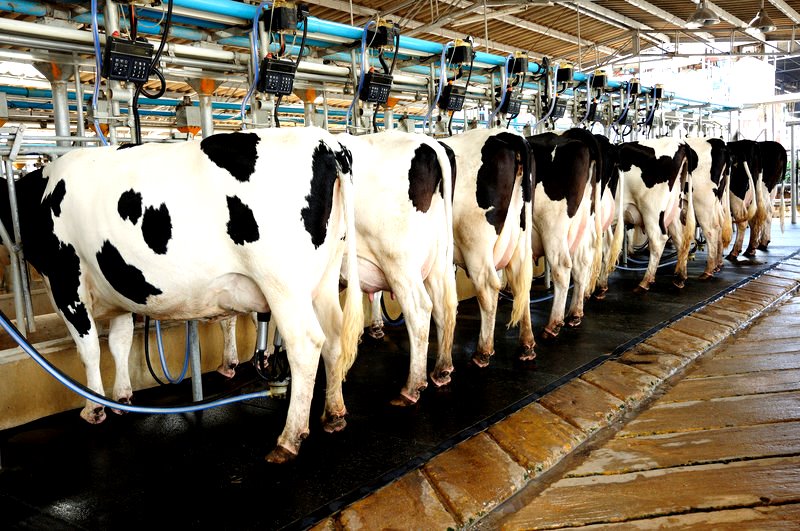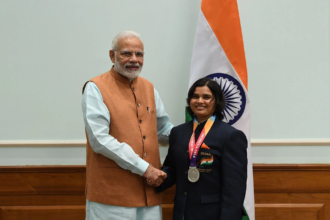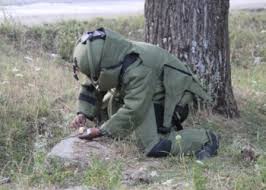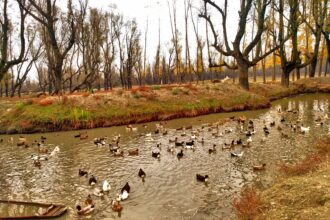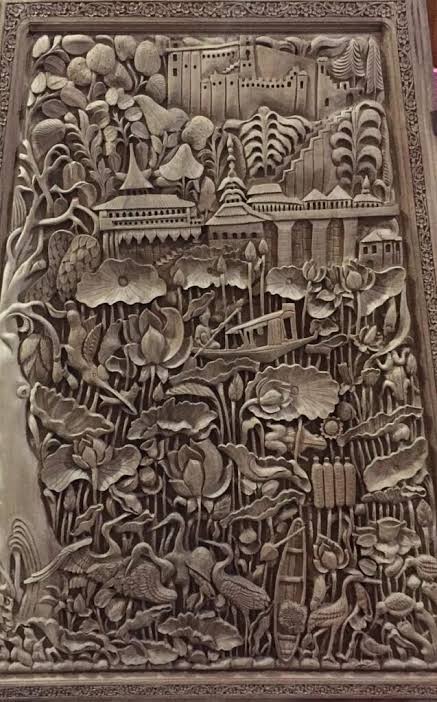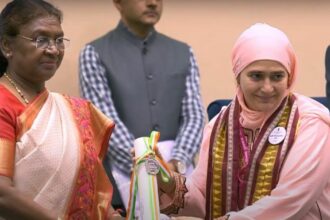
Rajpora’s Sheermal: A Cherished Culinary Tradition of Kashmir
Nestled in the Pulwama district of South Kashmir, the village of Rajpora has gained fame for its iconic delicacy, Sheermal—a flat, circular bread adorned with sesame seeds and known for its rich taste and cultural significance. This traditional bread is an integral part of Kashmiri celebrations, from weddings to religious festivals like Eid, and has become a symbol of communal…
Jammu and Kashmir’s Dairy Sector: Growth, Challenges and Opportunities
The dairy industry in Jammu and Kashmir (J&K) has been witnessing steady growth, with a total of 367 registered dairy units spread across the Union Territory. According to data provided by the Food Safety and Standards Authority of India (FSSAI), the twin cities of Srinagar and Jammu lead in the number of registered units, with 76 and 89, respectively. Other…
Drug Trafficking in J&K: 1,800 Cases Registered, 2,400 Peddlers Arrested Over Three Years
Introduction Jammu and Kashmir (J&K) has witnessed a significant rise in drug-related activities over the last few years, posing serious social, health and security challenges. The Union Territory's strategic location and porous borders have made it a hotspot for narcotics trafficking, contributing to a surge in substance abuse and its devastating consequences on the youth and society at large. Statistics…
Discover Categories
Most Read
Terrorists Open Fire on Army Vehicle in Rajouri, Security Forces Launch Search Operation
On 26 Feb, 2025, in a cowardly attempt to disrupt the peace…
Gulmarg Unveils Year-Round Helicopter Services: Explore the Hotspot like Never Before
Year-Round Heli Adventure Gulmarg, the breath-taking ski resort spread along the mighty…
Jammu and Kashmir Police Achieve Milestone in Reuniting Missing Persons with Families
Excellence of Jammu and Kashmir Police In a remarkable display of dedication…
Security Forces Detect Suspicious Objects in Shopian and Tral
On February 19, Security forces in Jammu and Kashmir detected two suspicious…
Srinagar Municipal Corporation Embarks on Ambitious Green Initiative
Introduction The Srinagar Municipal Corporation (SMC) has launched an ambitious year-long project…
J&K Faces Dire Water Crisis: Historic Rainfall Deficit Threatens Agriculture, Economy and Environment
Rainfall Deficit Jammu and Kashmir (J&K) is grappling with a severe water…
IED Blast Claims Lives of Army Captain and Soldier Near LoC in Akhnoor Sector
On Feb 11, in an unfortunate incident, an Army Captain and a…
Hygam Wetland Bustles with Nearly 3 Lakh Migratory Birds This Winter
Hygam Wetland The Hygam Wetland in north Kashmir is currently a haven…
Srinagar’s Master Woodcarver, Ghulam Nabi Hakak, Fights to Preserve Kashmir’s Dying Art
A Legacy Carved in Wood: Ghulam Nabi Hakak's Dedication to Kashmiri Art Ghulam Nabi Hakak, a 78-year-old master woodcarver from Srinagar, is a name synonymous with the exquisite artistry of Kashmir. Hailing from Nawabazar, Srinagar, Hakak is celebrated for his elaborate floral designs and intricate craftsmanship. His contributions to the craft are so significant that he is believed to have carved the United Nations logo in the 1970s, a testament to his skill that still adorns the General Assembly wall. In the face of declining demand and the rise of machine-made alternatives, Hakak remains a steadfast guardian of Kashmir's centuries-old woodcarving tradition, dedicating his life to preserving this fading heritage. A Lifelong Apprenticeship: Mastering the Chisel Hakak's journey into the world of wood carving began six decades ago when he apprenticed with a seasoned artisan. Speaking with the Kashmir News Observer (KNO), he recalled the initial challenges: "Handling the chisel was challenging at first. I injured myself several times before mastering the craft." This dedication and perseverance shaped him into the master craftsman he is today. Operating from his workshop in downtown Srinagar, Hakak, along with two fellow artisans, including his brother, continues to create stunning wooden pieces. Their creations range from intricately designed doors to Qur’an stands and ornate furniture, each piece a testament to their skill and the rich artistic heritage of Kashmir. A Dying Art: The Struggle Against Modernization Despite his unwavering commitment, Hakak laments the decline in demand for handcrafted items. "The work is not as abundant as before. People now prefer machine-made products over traditional handcrafted woodwork," he explains. This shift in consumer preference poses a significant threat to the livelihoods of traditional artisans and the survival of this unique art form. Hakak passionately urges the government to intervene and provide support to artisans, revitalizing this fading heritage and ensuring its survival for future generations. Passing the Torch: A Legacy for Future Generations Despite the challenges, Hakak remains committed to passing on his skills to younger generations. He hopes to ignite a passion for woodcarving in young minds, ensuring that Kashmir’s woodcarving legacy continues to thrive for years to come. The Rich Heritage of Kashmiri Wood Carving Kashmiri wood carving is a traditional art form practiced by artisans in the Kashmir region, known for crafting and decorating objects by hand. The wood carving industry in Kashmir has earned a worldwide reputation for its different handicrafts. Historical Roots and Influences The craft was introduced in the 15th century by Sheikh Hamza Makhdoom during the reign of Zainul Abdideen and may have developed and flourished under the care of Zain-ul-Abidin, who brought master artisans from Samarqand, Bukhara, and Persia. Wood carving in India dates back to ancient civilizations, with intricate wooden artifacts crafted during the Mauryan and Gupta periods (circa 500 BCE – 500 CE). With the advent of Islamic rule in India, wood carving incorporated Persian and Central Asian influences, such as geometric patterns, arabesques, and calligraphy. The modern type of wood-carving is the legacy of the Dogra rule. The Essence of the Craft: Materials and Techniques Carved walnut wood is among the most important crafts of Kashmir. The wood used for carving is obtained from the walnut tree, known as ‘Doon Kul,’ which is cut only after it matures to an age of 300 years. Kashmir is one of the few places where walnut trees are available. Walnut wood is extremely hard and durable, with a close grain and even texture that allows artisans to create fine and detailed work. The wooden planks obtained from walnut trees are piled upon each other with a layer of gap between each for the passage of air, which helps in the process of seasoning. Different types of carving include deep carving (Vaboraveth), semi-carving (Padri), and shallow carving (Sadikaam). Patronage and Evolution: A Craft Shaped by History King Zain-ul-Abidin patronized wood carving to improve the economic conditions of the valley. During the Dogra rule, Maharaja Pratap Singh presented a wood-carved gate to King George V, which served to advertise the wood carving of Kashmir among the British aristocracy. Initially restricted to the creation of elaborate palaces and houses, the craft later expanded to encompass a wide range of contemporary products, adapting to changing tastes and demands. Preserving a Legacy: The Path Forward The story of Ghulam Nabi Hakak is a microcosm of the challenges faced by traditional artisans in Kashmir. As demand for handcrafted goods dwindles in favor of mass-produced alternatives, the survival of this unique art form hangs in the balance. Support from the government, coupled with efforts to promote and preserve traditional skills, is crucial to ensuring that Kashmir's woodcarving legacy continues to inspire and enrich the world for generations to come. The dedication of master artisans like Ghulam Nabi Hakak serves as a beacon of hope, illuminating the path towards preserving this invaluable cultural treasure.



